Three billion years ago, the Earth looked very different than today: the oceans were nearly free of oxygen and the sediments on the ocean floor were rich in iron minerals. The early Sun was much dimmer than today and yet the oceans contained liquid water requiring that Earth was not frozen. This is known as the ‘faint young sun paradox’. There must, therefore, have been high concentrations of greenhouse gases in the atmosphere, but the nature and source of these gases remains a mystery, to this day. Now, measurements of the sediments from Indonesian Lake Towuti provide new clues. At its bottom, conditions are similar to those in the oceans three billion years ago. Under the lead of Jens Kallmeyer of the German Research Centre for Geosciences (GFZ) in Potsdam, Sean Crowe from the University of British Columbia (UBC) in Canada, and Cynthia Henny from the Indonesian Institute of Sciences (LIPI) a research team from fourteen institutions and a total of five countries was able to show that, contrary to conventional theories, microbes in Lake Towuti’s sediments produce abundant methane—a potent greenhouse gas. On the early Earth, this methane would have accumulated in the atmosphere providing the greenhouse effect needed to warm Earth’s surface under the dim early Sun. The study was published today in the journal Nature Communications.
Deep in the jungle of the island of Sulawesi lies Lake Towuti, Indonesia's second largest lake with an area of 560 square kilometres and depths of up to 200 metres. The lake has a very special chemistry that is rare on Earth today. In its deepest parts, below 130 metres water depth, it is free of dissolved oxygen and rich in dissolved iron. In addition, iron minerals, especially iron oxides account for more than one third of its bottom sediment.
The puzzle of greenhouse gases three billion years ago
The conditions in Lake Towuti and its sediments are thus very similar to those in the oceans around three billion years ago, which also had sediments comprised of abundant iron minerals. The most iron-rich of these sediments, Banded Iron Formations (BIFs), represent important iron ore deposits. Free oxygen, as we and many microorganisms breathe today, was scarce, both in the oceans and the atmosphere.
Since the sun was weaker than it is today, temperatures on the early Earth could have been much lower. Nevertheless, the oceans were liquid, not frozen. This phenomenon is well known as the ‘faint young sun paradox’ originally recognized by the astronomers Carl Sagan and George Mullen in 1972. One possible explanation: there must have been high concentrations of greenhouse gases, like carbon dioxide and methane, in the atmosphere to warm Earth’s surface under the dim sun. The nature and source of these greenhouse gases remain an unresolved mystery.
Time travel through measurements in Lake Towuti
The research team, especially doctoral candidates Andre Friese (GFZ), and Kohen Bauer (UBC), now help resolve this mystery by measuring sediments in Lake Towuti. These measurements allow them to travel back in time, so to speak, to study the conditions and processes that prevailed in primeval times. This includes the metabolism of organic material, i.e. its transformation into inorganic substances, which plays an important role in the global carbon cycle and climate regulation.
A specialized drilling platform provided the researchers a vehicle for their journey through time. It was part of a drilling project of the International Continental Scientific Drilling Programme ICDP, spearheaded by James Russell (Brown University), Satria Bijaksana (Institut Teknologi Bandung), Hendrik Vogel (University of Bern), and Martin Melles (University of Cologne). They have extracted more than a kilometre of sediment drill cores from Lake Towuti, including a 112 m long core for biogeochemical and geomicrobiological analyses that was drilled under special contamination controlling conditions.
The researchers were on site for two months in 2015, during which time they collected, preserved, and partially analysed the recovered sediment cores. Sediment samples were then shipped out to laboratories of the participating research groups for a wide array of state-of-the-art analyses. These included both mineralogical and microbiological analyses to study microbial iron and methane metabolisms and this information was used in numerical models that helped interpret the results.
Surprising microbial processes
Using a very wide range of techniques the researchers were able to analyse and quantify the microbially controlled processes in the sediment of Lake Towuti – with surprising results. Since iron oxides are available in abundance in the sediment, it had been assumed that the microbes would mainly use these minerals – since oxygen was absent - for their metabolism. In the process, this microbial metabolism essentially produces carbon dioxide from sedimentary organic matter. In fact, Friese and Bauer and their colleagues found that the iron oxides were not metabolized and instead of producing carbon dioxide, the microorganisms mainly produced methane. Why they spurn the iron oxides is not yet completely understood.
“Microorganisms readily metabolize iron oxide minerals in laboratory studies and these studies form the basis of our knowledge for such metabolism on the early Earth” says Kohen Bauer, one of the primary authors. “Our real-world findings from Lake Towuti now force us to reconsider microbial metabolism in sediments and, by extension, the processes that helped regulate Earth’s early climate.”
Projection into prehistory
Since methane is a considerably more potent greenhouse gas than carbon dioxide, this - projected to three billion years ago - is likely to have had an appreciable impact on the composition of the Earth's atmosphere. Whereas the methane in today's Lake Towuti rises from the sediment and is rapidly converted into carbon dioxide through reaction with the oxygen dissolved in Lake Towuti’s surface waters, this oxygen-dependent reaction pathway did not exist in prehistoric times. Given that three billion years ago there was little free oxygen in the oceans and atmosphere, the methane produced in the oceans would escape to the atmosphere unhindered where it would contribute to a strong greenhouse effect.
"Our results from Lake Towuti challenge current knowledge of microbial processes in iron-rich environments. They run completely different to what we had expected. This allows us to help unravel the puzzle of atmospheric evolution three billion years ago," says Jens Kallmeyer, head of GFZ aquatic geochemistry laboratory. "Because of its special chemistry, we see Lake Towuti as an ideal living model system for this time, which we are only slowly beginning to understand." The geomicrobiologist therefore expects further exciting findings from there in the coming years.
Original publication: A. Friese, K. Bauer, C. Glombitza, L. Ordoñez, D. Ariztegui, V.B. Heuer, A. Vuillemin, C. Henny, S. Nomosatryo, R. Simister, D. Wagner, S. Bijaksana, H. Vogel, M. Melles, J. M. Russell, S. A. Crowe, J. Kallmeyer, and the Towuti Drilling Project Science Team (2021). Organic matter mineralization in modern and ancient ferruginous sediments. Nature Communications. DOI: 10.1038/s41467-021-22453-0
Scientific contact:
Dr. Jens Kallmeyer
Section Geomicrobiology
Helmholtz Centre Potsdam
GFZ German Research Centre for Geosciences
Telegrafenberg
14473 Potsdam
Phone: +49 331 288-28785
Email: jens.kallmeyer@gfz-potsdam.de
Media contact:
Dr. Uta Deffke
Public and Media Relations
Helmholtz Centre Potsdam
GFZ German Research Centre for Geosciences
Telegrafenberg
14473 Potsdam
Phone: +49 331 288-1049
Email: uta.deffke@gfz-potsdam.de


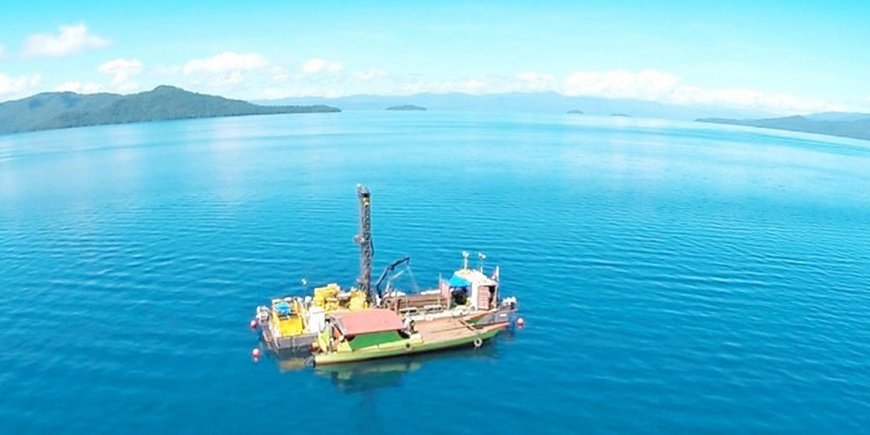
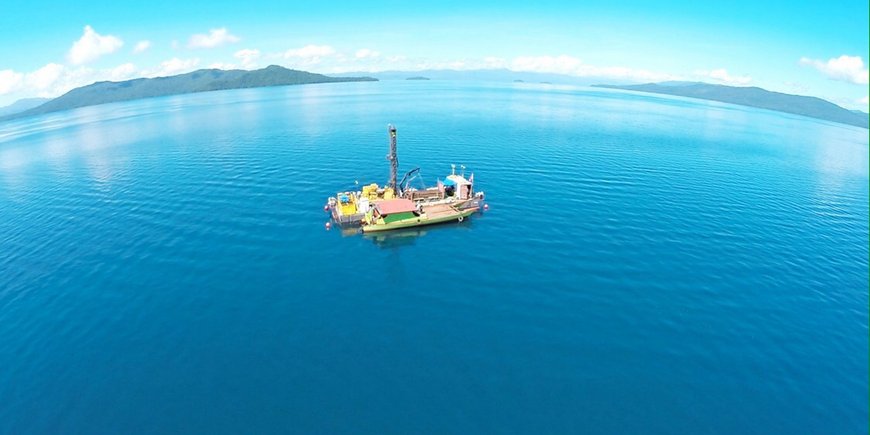
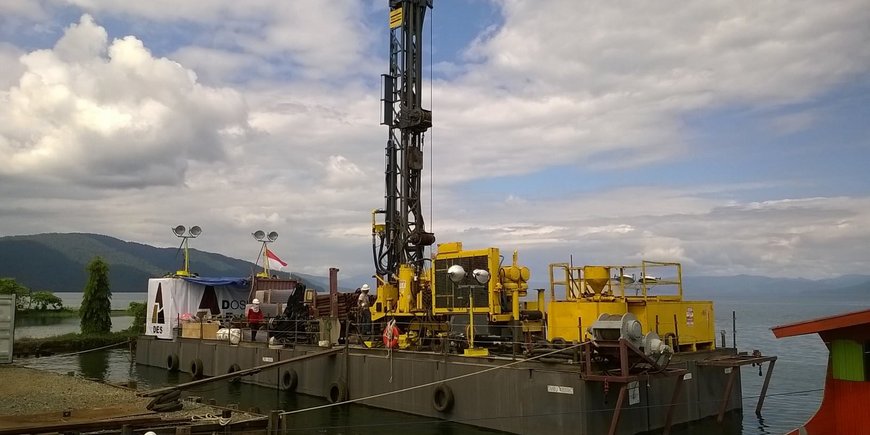
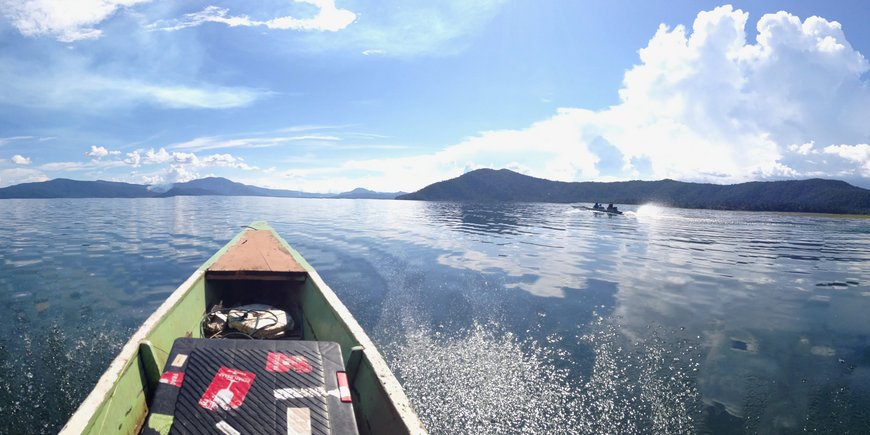
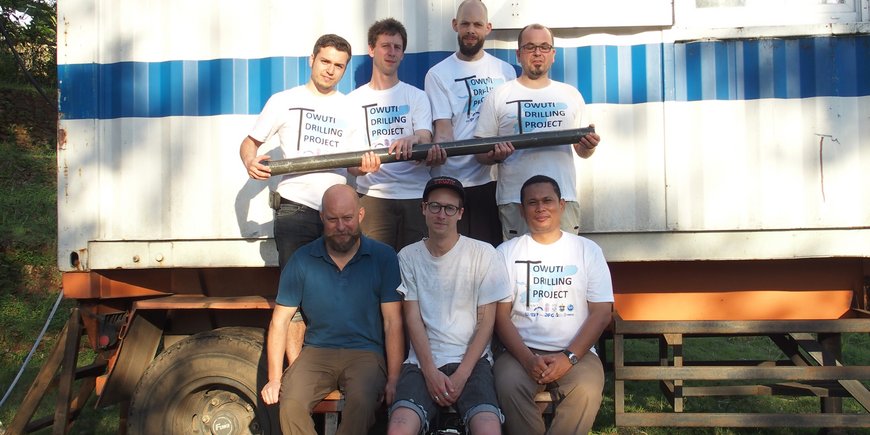





![[Translate to English:] Torsten Sachs in front of a climate station on a field](/fileadmin/_processed_/3/9/csm__TorstenSachs_bearbeitet_GS_4a1365ef84.jpeg)

![[Translate to English:] left image flood at the Ahrtal: image from above, several houses are flooded; left image:: Heidi Kreibich;](/fileadmin/_processed_/4/4/csm_Bild2_9af0130e9f.png)



![[Translate to English:] Start der Vega Rakete](/fileadmin/_processed_/6/4/csm_20231201-kachel_Vega-VV23-launch_ESA-CNES-Arianespace_706716b68c.jpeg)









![[Translate to English:] Poster exhibition at the Brandenburg Hydrogen Day at the GFZ, some participants in the foreground](/fileadmin/_processed_/6/5/csm_Erster_Brandenburgischer_Wasserstofftag_GFZ_402fcec95e.jpeg)
![[Translate to English:] Group picture of the participants](/fileadmin/_processed_/9/4/csm_20231108_CAWa-Workshop-Tashkent_Gruppenbild_99ea779d8a.jpeg)

![[Translate to English:] [Translate to English:] Hörsaal](/fileadmin/_processed_/e/6/csm_H%C3%B6rsal_e21ac645fb.jpeg)


![[Translate to English:] The Delegations in the Historic Library on the Telegrafenberg. In the back there are from left to right, the Dutch Ambassador for Germany, Ronald van Roeden, the Dutch Minister for Education, Culture and Science, Robbert Dijkgraaf and the scientific director of the GFZ, Susanne Buiter.](/fileadmin/_processed_/d/b/csm_Kachel-2_9eba4b4212.jpeg)

